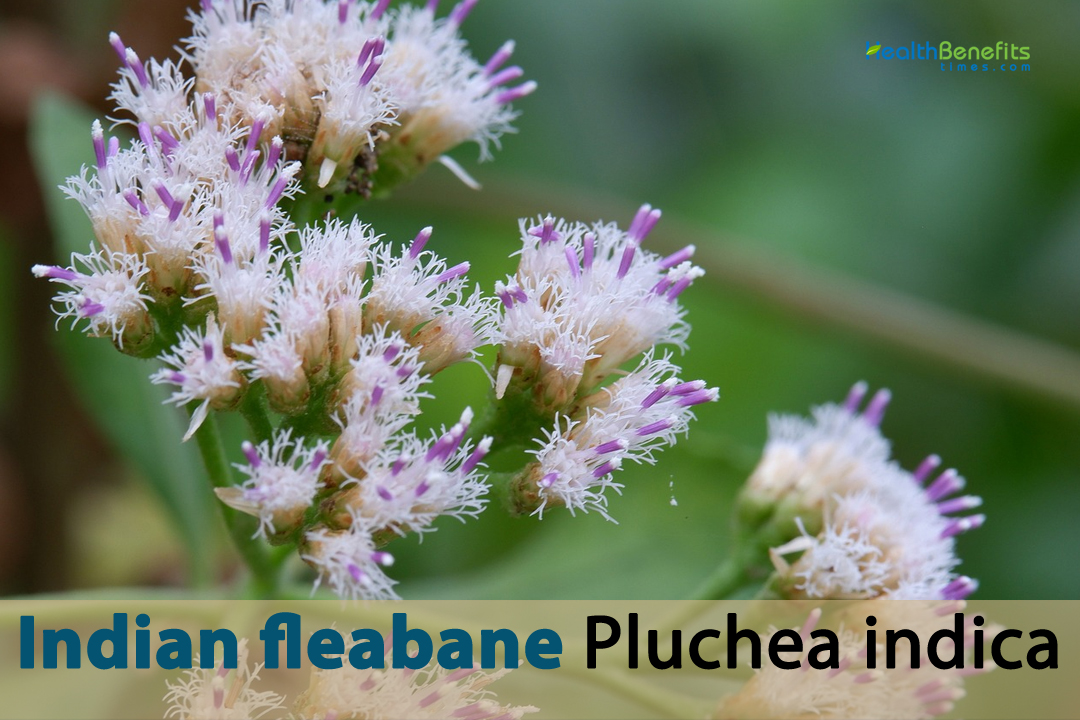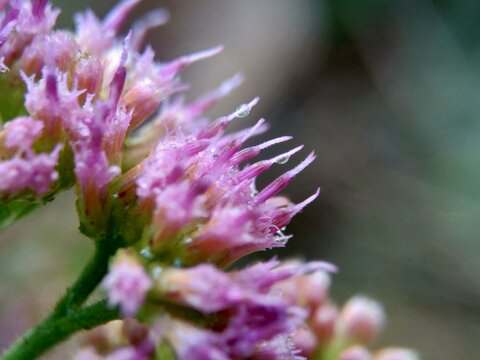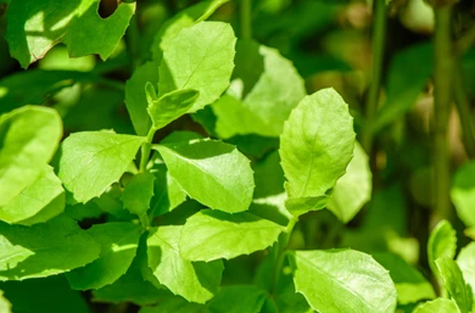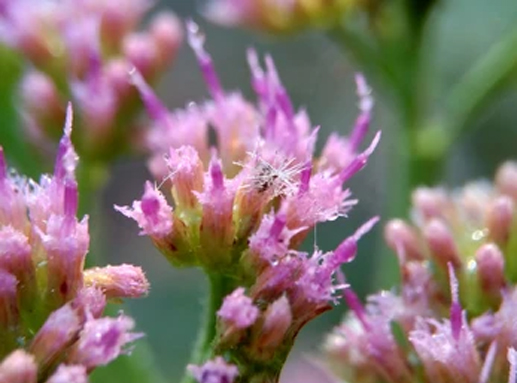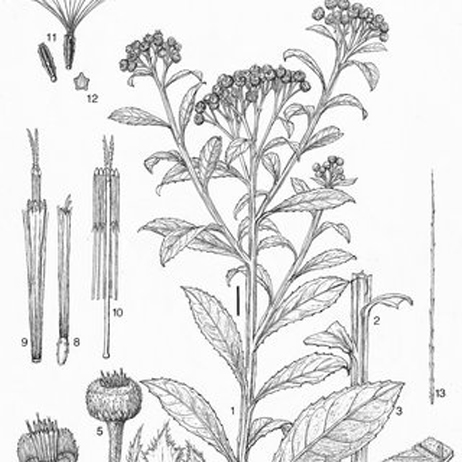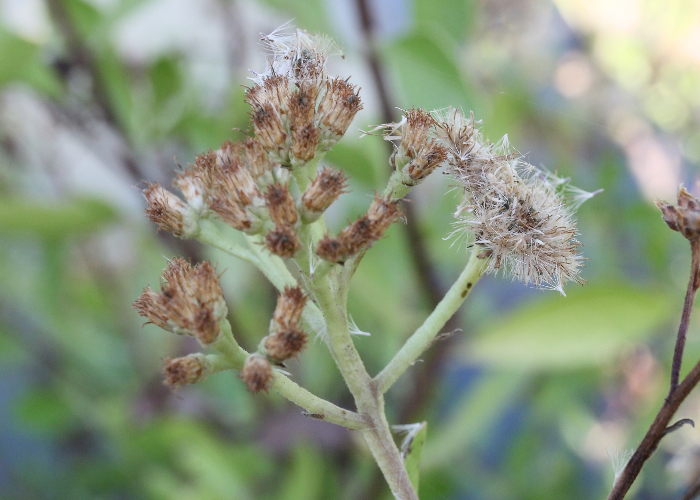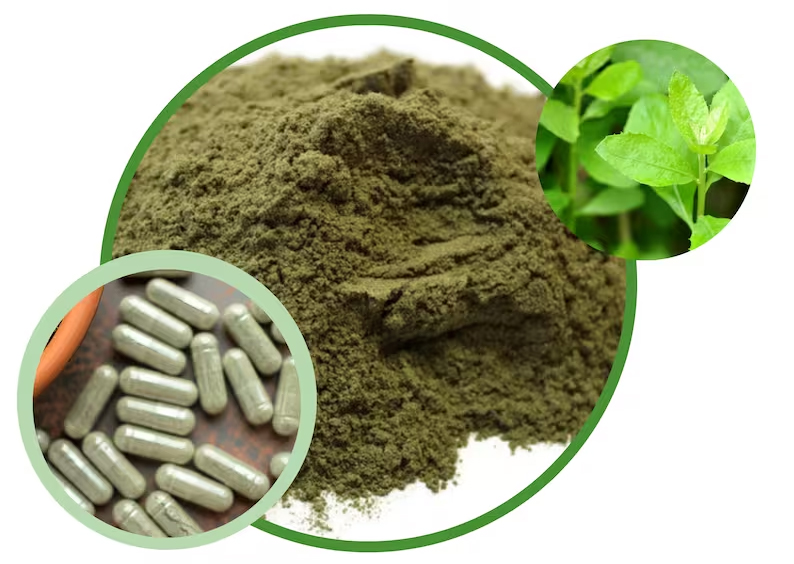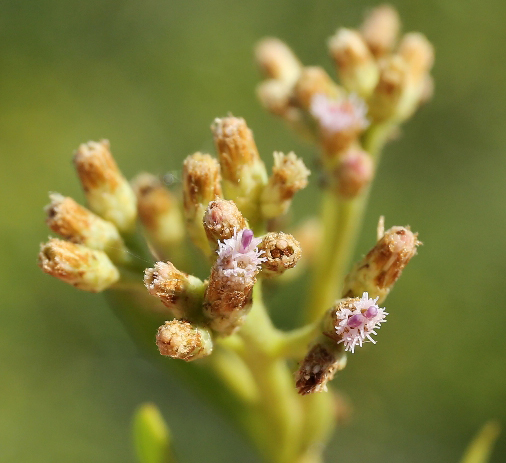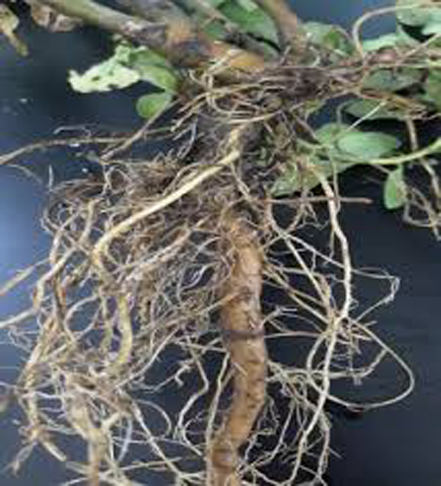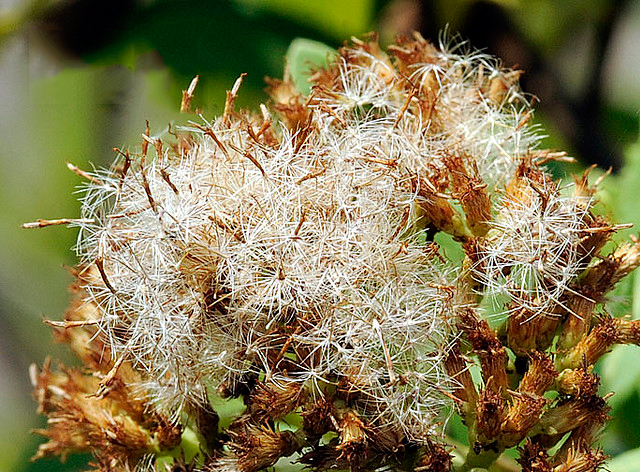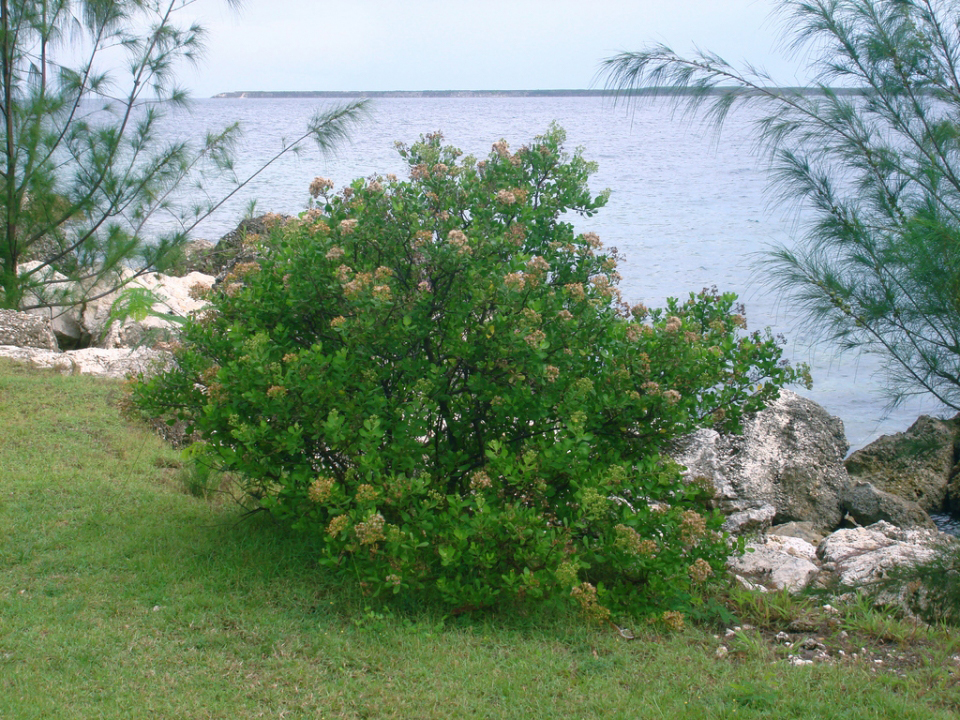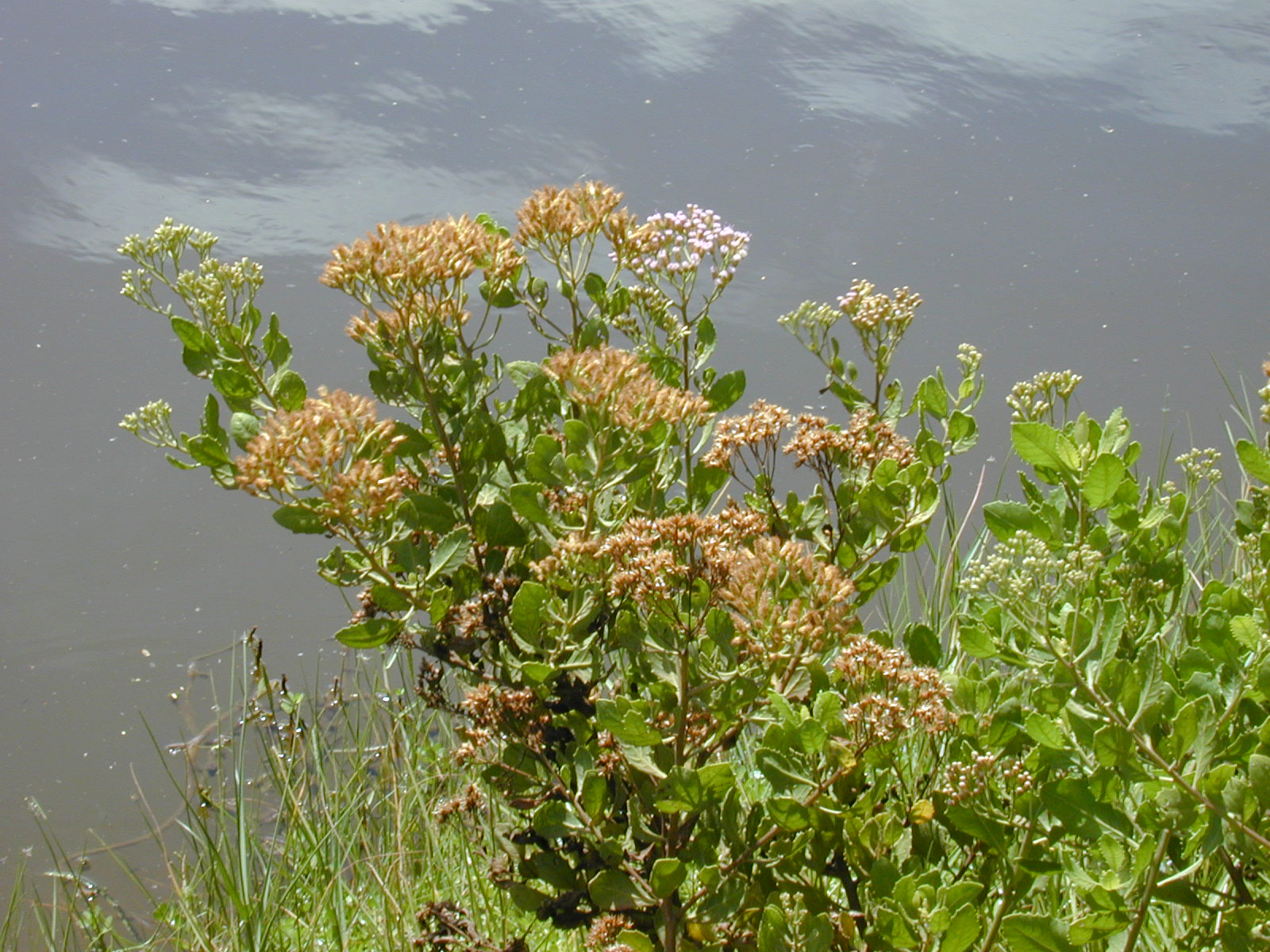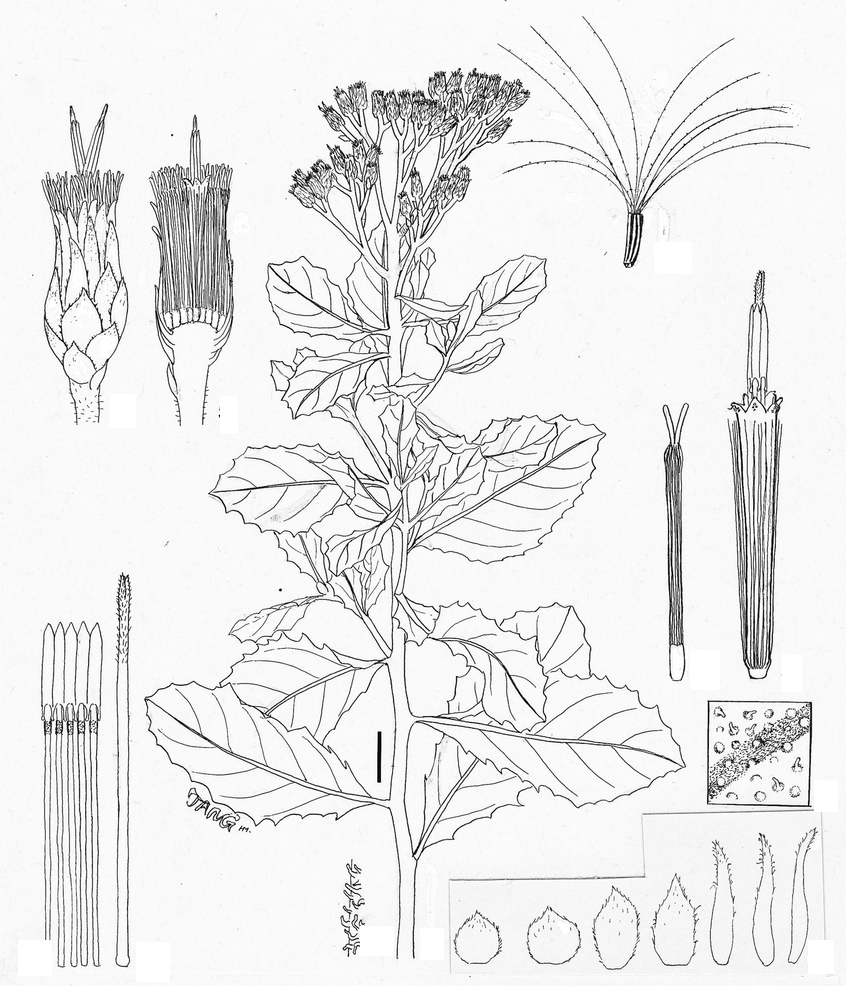| Indian fleabane Quick Facts | |
|---|---|
| Name: | Indian fleabane |
| Scientific Name: | Pluchea indica |
| Origin | Parts of E. Asia - Bangladesh, Myanmar, southeast China, Thailand, Laos, Vietnam, Cambodia, Malaysia, Indonesia, Philippines, Africa, and the Americas |
| Colors | Initially green turning to green as they mature |
| Shapes | Achenes that are minute and ribbed |
| Taste | Slightly bitter, earthy, or astringent |
| Health benefits | Kidney stones, diarrhea, hemorrhoids, inflammation, lumbago, leucorrhea, hypertension, diabetes, tumors, wounds, headaches, rheumatism, sprains, scabies, dysentery and dyspepsia |
| Name | Indian fleabane |
|---|---|
| Scientific Name | Pluchea indica |
| Native | Parts of E. Asia – Bangladesh, Myanmar, southeast China, Thailand, Laos, Vietnam, Cambodia, Malaysia, Indonesia, Philippines, Africa, and the Americas. |
| Common Names | False golden aster, Indian pluchea, White Marsh Fleabane, Indian Fleabane, Indian Camphorweed, Wild Calea, Marsh Fleabane, Purple Fleabane, Rasna, White Snake Root, Mexican Shrubby Fleabane, Mexican Bush Fleabane |
| Name in Other Languages | Amharic (Ethiopian): Ditremo (ድጥሬሞ) Cambodia: Pros anlok Chinese: Ge za shu, Kuo bao ju (闊苞菊), Luan yi, Dà yú mó (大榆蘑), Luán xī (栾樨), Zéiyú dǎn (鯽魚膽) English: Indian Fleabane, Indian camphorweed, Indian pluchea French: Herbe du cancer German: Indisches Flohkraut, Indische puche Hindi: Rasna (रसना), Kukronda Indonesian: Beluntas, Luntas, Baruntas, lamutasi, lenabou Italian: Fleabane indiano Japanese: Momiya (モミヤ), , hiiragi-giku (ヒイラギギク) Javanese: Luntas Laotian: Nat luat, Me jay ma Malay: Beluntas, Pokok Beluntas Malaysian: Beluntas, Beluntas paya Papua new guinea: A’apu Persian: بنفش هندی Philippines: kalapini, banig-banig Portuguese: Erva-de-cancer Russian: Indiyskiy pushistik (Индийский пушистик) Spanish: Hierba del Cancer Sundanese: Baluntas Thai: Khlu (ขลู่), Kloo, Nuat ngua, naat wua, Vietnamese: Cúc tần, C[us]c t[aaf]n, l[as] l[uws]c, Phat pha, Tu bi, lú’c cây |
| Plant Growth Habit | Evergreen, slender, erect, much-branched, herbaceous perennial shrub |
| Growing Climates | Moist or marshy areas, such as wetlands, riverbanks, fishponds, coastal pastures, brackish swamp, lowland riparian zones, coastal brackish marshes and other saline areas |
| Soil | Grow in many different types of soil, such as sandy, loamy, and clayey soils. But it grows best in soils that drain well and have a lot of organic matter |
| Plant Size | Up to 1.5 meters (5 feet) |
| Root | Thick, woody, flexible, and spread out. They can grow to be a few centimeters long and are brown to dark brown in color |
| Stem | Looks like a cylinder and grows straight up to a height of 1.5 metres (5 feet). The stem splits into many smaller stems, giving the plant a bushy or shrubby appearance |
| Leaf | Lanceolate leaves that are elongated and pointed, with serrated edges. The leaves are arranged alternately along the stems, which may branch out to create a bushy or shrubby appearance |
| Flower | Small, clustered flowers in terminal inflorescences. These flower heads contain numerous tubular florets that are usually white, sometimes with hints of pale pink or lavender |
| Fruit Shape & Size | Achenes are minute and ribbed; the pappus is white, scanty, and spreading |
| Fruit Color | Initially green turnng to green as they mature |
| Seed | Small and measure between 1 and 2 millimeters across. They look like small, long capsules |
| Flavor/Aroma | When the plant is fresh or crushed, it emits a slightly herbal, aromatic fragrance reminiscent of camphor |
| Taste | Slightly bitter, earthy, or astringent |
| Plant Parts Used | Leaves, stems, roots, and flowers |
| Propagation | By Seeds, stem cuttings, division, rhizome division |
| Lifespan | Approximately 3 to 5 years |
| Available Forms | Herbal infusions, decoctions, or extracts |
| Health benefits |
|
Plant Description
Indian fleabane, also known as Indian camphorweed, is an annual herbaceous shrub that can grow up to 1.5 meters (5 feet) tall and has leaves that stay green all year. It grows straight up and has various stems that branch out to make it look bushy. The plant grows in wet or marshy places like wetlands, riverbanks, fishponds, coastal pastures, brackish swamp, lowland riparian zones, coastal brackish marshes and other salty places, mangroves, and tide flats. It can sometimes be found inland in wooded places, but the species can’t stand a lot of shade. Indian fleabane can grow in many different types of soil, such as sandy, loamy, and clayey soils. But it grows best in soils that drain well and have a lot of organic matter. The best pH range for Indian fleabane is between 6.0 and 7.5, which is slightly acidic to slightly alkaline. It can live in pH levels that are a little higher or lower, but it may not grow as well.
Roots
Most of the time, the roots are thick, woody, flexible, and spread out. They can grow to be a few centimeters long and are brown to dark brown in color. The roots of a plant often spread out over a large area of dirt. This helps the plant stay put and get nutrients and water from the ground. The roots are very valuable because they have healing qualities. They have healing benefits because they have bioactive compounds in them. This makes them an important part of traditional medicine. Its roots are important to the culture of some groups, and they are used in traditional treatment methods. They are seen as important sources of medicine and are used in ceremonies and traditions as signs of healing and well-being.
Stem
The stem is herbaceous, which means it is not made of wood and doesn’t feel like wood like tree branches do. It usually looks like a cylinder and grows straight up to a height of 1.5 metres (5 feet). The stem splits into many smaller stems, giving the plant a bushy or shrubby appearance. The stem is generally green, which shows that it is growing and able to take in light. The green colour comes from a pigment called chlorophyll, which absorbs light and helps the process of photosynthesis happen. The stem is covered with tiny hairs called trichomes, which make it feel a little rough when you touch it. These hairs can protect against losing too much water, being eaten by plants, or being stressed out by the surroundings.
The main job of the stem is to give the plant support and structure. It helps keep the leaves and flowers standing up so they can get the most sunshine possible for photosynthesis. In some areas, the plant is important because it is used in traditional ways to treat illness. As a sign of healing and well-being, the stem and other parts of the plant can be used in rituals and celebrations.
Bark
Indian fleabane is a grass plant that doesn’t have bark like woody trees. It does, however, have a clear upper layer on its stem, which can be called “bark” in a more general sense. The outer layer of a stem is tough and made of fibres. This layer guards the inner tissues. Even though it doesn’t look like normal tree bark, it serves the same purpose by protecting the stem underneath. It is usually rough and can feel like fibres or be a little bit scratchy. The outside skin can be different colours, but it is usually brown or grayish-brown. Depending on how old and mature the plant is, the thickness of the skin can change. When the stem is young, the skin may be thin and fragile, but as the stem gets older, it can get thicker and stronger. The stem’s top layer protects it from the weather, animals that eat it, and damage from humans and other animals. It helps protect the stem’s most important cells and structures, such as the vascular system, which moves water, nutrients, and sugars.
Leaves
Along the stem, the leaves are set up in an alternating design. This means that each leaf grows from a different place on the stem. As you move up the plant, the sides of the leaves change. The shape of the leaves is ovate, which means they are long and thin and end in a point. The way the leaves are shaped helps them use as much of their surface area as possible for photosynthesis. The leaves can be different sizes, but they are usually between 5 and 10 centimeters long. The leaves can be anywhere from 1 to 3 centimeters wide. The leaves are a good size, with a good mix between how much surface area they have and how well they use energy. Most of the time, the edges or borders of the leaves are cut or toothed. The edges have small, sharp teeth that can be different sizes and distances apart.
There are large lines that run through the leaves. Most of the time, the veins run parallel to each other and branch out as they go from the base of the leaf to the tip. These lines help water, food, and sugars get to all parts of the leaf. Most of the time, the leaves are a bright green color, which is a sign of healthy growth. The green color comes from chlorophyll, a pigment that helps plants use sunshine to make food through a process called photosynthesis. The top side of most leaves is smooth and shiny, while the bottom side is slightly hairy or glandular. Fine hairs on the bottom of the leaf help keep water from escaping and keep herbivores away. At nodes, where the leaves come out of the stem, the leaves are connected to the stem. Petioles, which are thin stalks that hold up the leaf blade, connect them to the stem.
Flowers
Indian fleabane has small flowers that are grouped together at the end of the stems. The inflorescences are made up of a group of flower heads at the end of each stem. Each flower head is made up of many separate flowers. Each flower head is made up of many tiny flowers with tubes called petals. The florets are all close together and round, making a combined flower head. Most of the time, the flowers are white, but sometimes they have a hint of pale pink or purple. The color may be a little different from plant to plant and depend on the surroundings. Each floret is shaped like a tube and has five small petals that meet. Near the base, the flowers can be joined together to make a short tube with flared ends.
The inflorescences can be any size, but most of the time they are small to medium-sized. Depending on how far along the plant is in its blooming process, the flower heads may be about 1 to 2 centimeters across. Each floret has both male and female elements that help it reproduce. The male part that reproduces, called the stamen, is made up of a thread and an anther that holds pollen at the top. The stigma, style, and ovary make up the pistil, which is the part of the flower where the seeds grow. In general, plants bloom in late summer and early autumn. The flowers may bloom at different times based on where they are and what the weather is like there. Most flowers get their pollen from animals, especially bees and butterflies. These insects are drawn to the flowers’ nectar, and they are very important for getting pollen from one flower to another. This helps the flowers get fertilized and make seeds.
Fruits
Achenes are the small, dry fruits that the plant makes. Achenes are fruits that only have one seed and don’t split open when they’re ready. Most of the time, they are small and have a hard shell. Most of the time, they are small and long, like tiny seeds. They can be anywhere from 2 to 3 millimeters long. The size and form of each fruit may be a little different. Most of the time, the color is brown or dark brown. When the seeds are young, they are usually a lighter color than the fruits when they are fully grown. The outside layer is hard and dry, which protects the seed inside. The top may be a little rough or textured which helps the fruits spread in different ways. There is only one seed in each achene.
Seeds
Most seeds are small and measure between 1 and 2 millimeters across. They look like small, long capsules because they are round or long. Most seeds are light brown or tan in color. Different seeds may be a slightly different shade of brown. The seed coat or testa is the outside layer of a seed. It is thin and smooth, and it protects the parts of the seed that are inside. The seed coat protects the seed from things like moisture loss and physical damage that come from the outside.
Health Benefits of Indian fleabane
Indian fleabane is a leafy plant that can be used in many ways and has many health benefits. Its long history of use in native medicine systems has led to scientific study that has shown it has healing properties. Let’s explore in detail the various health benefits of Indian fleabane
1. Respiratory Health
Indian fleabane has been used for a long time to help keep the lungs healthy. It has expectorant properties that help relieve congestion and make it easier for mucus to leave the respiratory system. People often use this plant to ease the signs of coughs, colds, bronchitis, and asthma. Its anti-inflammatory properties could also help lower swelling in the airways, making it easier to breathe.
2. Anti-inflammatory and Analgesic Effects
The plant has a lot of anti-inflammatory qualities that can help reduce pain and swelling in the body. Indian fleabane has been used for a long time to treat headaches, joint pain, and muscle pain. Its anti-inflammatory benefits make it a good natural way to treat conditions like arthritis that cause pain and swelling over time.
3. Digestive Aid
Indian fleabane has been used to help the body digest food for hundreds of years. It can help relieve gut problems like indigestion, gas, and stomachaches. Compounds in the plant help digestion by increasing the production of stomach enzymes and making the gut move more smoothly. Indian fleabane may also help lower inflammation in the digestive tract, which could help people with bowel conditions that cause inflammation to feel better.
4. Skin Health
Indian fleabane has qualities that are good for the skin. It can help fight skin diseases and reduce redness or swelling because it kills bacteria and reduces inflammation. The plant’s extracts and essential oils are often used in natural skin care products to treat skin irritations, eczema, and psoriasis. It may also help wounds heal because it encourages the growth of new tissue.
5. Antioxidant Power
Indian fleabane is made up of powerful antioxidants that protect the body from oxidative stress and damage caused by free radicals. Antioxidants help get rid of harmful molecules, which lowers the risk of long-term illnesses like cancer, heart disease, and nerve degeneration. Regular use of items made from Indian fleabane may be good for your health and well-being as a whole.
6. Stress and Anxiety Relief
Indian fleabane is a great natural treatment for relieving stress and relaxing because it smells good. Its pleasant smell can help calm the mind, reduce nervousness, and make you feel more at ease. Managing stress-related conditions can be helped by using Indian fleabane in aromatherapy or by using items that contain its essential oil.
7. Immune System Support
Indian fleabane is made up of a number of bioactive substances that help the immune system work. It may help boost immune reactions and make the body more resistant to infections and diseases because of how it affects the immune system. If you eat or drink Indian fleabane or its extracts on a regular basis, it may help your immune system and general health.
8. Anti-allergenic Properties
Indian fleabane has been used for a long time to help people with allergies feel better. It may help lessen allergic reactions like sneezing, itching, and stuffy noses because it is anti-allergenic. Compounds in the plant may stop the release of histamine, a chemical that is involved in allergic reactions. This could help people who are prone to allergies feel better.
9. Anti-diabetic Effects
Studies have shown that Indian fleabane may help people with diabetes. It might help control blood sugar and make insulin work better. Compounds in the plant help the body use glucose more efficiently, which is good for people with diabetes or who are at risk of getting it. Still, more study needs to be done to fully understand how it works.
10. Wound Healing
Indian fleabane has leaves and products that can help heal wounds. They help cells grow back and speed up the mending process. It can be put on cuts, wounds, and scrapes on the skin to stop illness and speed up healing. Its antibacterial properties also keep bacteria or fungi from growing in the wound.
11. Anti-microbial Properties
Indian fleabane kills bacteria and fungus by preventing them from growing. It can stop the growth and spread of dangerous microorganisms, making it less likely that someone will get sick. Extracts or essential oils from the plant can be put on skin infections, cuts, or scrapes to help heal them. Indian fleabane is a good natural way to keep your skin healthy because it kills germs.
12. Anti-ulcer Activity
Indian fleabane has been used for a long time to help heal sores and keep the digestive system healthy. Studies have shown that it protects the lining of the gut and lowers the risk of getting gastric ulcers. Compounds in the plant help stop germs that cause ulcers from growing and help ulcers heal faster.
13. Liver Health
Indian fleabane may have qualities that protect the liver, helping to keep it healthy and working well. It can help clean out the liver, raise the amount of liver enzymes, and protect the liver from damage. Regular use of Pluchea indica or its products may help keep the liver healthy and help treat diseases that affect the liver.
Traditional uses and benefits of Indian fleabane
- Leaves are used to calm nerves and treat inflammation in South-East Asia and Thailand.
- Hemorrhoids can be treated with a decoction of bark.
- It is used to treat kidney stones, hemorrhoids, inflammation, lumbago, and leucorrhea in Thai folk medicine.
- It is used to treat high blood pressure, cystitis, type 1 diabetes, wounds, and tumors.
- Root or leaf decoction used in Vietnam to treat fever, dysentery, headaches, sprains, gout, and upset stomach.
- A treatment for diarrhea is a mixture of the juice from crushed leaves and the juice of other plants.
- Leucorrhoea is treated with a tea made from the leaves, which is generally mixed with other things.
- In Papua New Guinea, people with asthma and other lung problems drink a tea made from the leaves and stem.
- In Indonesia, it is mixed with other things to make a poultice that helps people who are weak after having diarrhea and who have wounds or sores.
- Paste made of roots and other things is used to treat pain from rheumatism.
- It is put on the skin to treat skin problems, and fresh leaves are used to treat hemorrhoids.
- A decoction made from the fresh leaves is also used to treat colds when inhaled.
- Broken bones are bandaged with powdered leaves that have been mixed with beeswax and castor oil.
- Lumbago is treated in Vietnam and Cambodia by drinking a tea made from the leaves or crushing the leaves and young shoots and putting them in booze.
- In Indonesia, the crushed leaves are eaten raw or cooked to get rid of bad breath and sweat that smells bad.
- In traditional Lao medicine, a hot decoction of leaves is used to wash the eyes when dust makes them red and hurt.
- It has been used for a long time to treat breathing problems like coughs, colds, bronchitis, and asthma.
- It can also be put on the skin to ease irritations and help wounds heal.
- People used teas and drinks made from the plant to treat gut problems like indigestion and stomachaches.
- External poultices and compresses were used to treat muscle aches, joint pain, and insect bites. The aromatic properties of the plant were also used to help people rest and feel less stressed.
- It has been put on the skin to treat things like rashes, bug bites, and small cuts.
- It is often used as a steam intake to clear up stuffy noses.
- An infusion made from the leaves can help calm the mind and bring about a sense of peace.
- Preparations made from the roots may help reduce inflammation and ease the pain that comes with it.
- Leaves are used by Dayak Pesaguan tribes to get rid of bad body odor, boost appetite, and treat digestive problems.
- It is taken by mouth to stop guys from getting pregnant.
- In Indochina, people with lumbago drink a tea made from leaves.
- In Thailand, bark decoctions are used to treat kidney stones and stem decoctions are used to treat hemorrhoids.
- Eye diseases and itchy skin can be treated with a cream made from aerial parts.
- Cigarettes made of chopped stem bark are used to ease the pain of sinuses.
- In Indochina, scabies is treated by crushing the young shoots and leaves, mixing them with alcohol, and putting the mixture in baths.
Culinary uses
Indian fleabane is mostly valued for what it can do for your health. But it’s not something that’s often used in cooking. Because of its strong smell and bitter taste, it is not as good for cooking. Still, in some traditional cuisines, it is sometimes used in certain recipes because of its unique flavor and possible health benefits. Here are a few examples of the limited culinary uses of Indian fleabane
- Flavoring Agent: A small amount of Indian fleabane leaves or powder can be used to add flavor to stews or soups in some regional cuisines. It gives the dish a distinct aroma and can make the food taste better overall.
- Traditional Beverages: Indian fleabane is sometimes added to traditional herbal drinks or tonics along with other herbs and spices to make a tasty and possibly healing drink.
- Herbal Infusions and Teas: The leaves of Indian fleabane can be used to make plant teas and infusions. The herbal flavors of the leaves come out when they are soaked in hot water. Some people drink this infusion to help with their digestion or as a soothing plant drink.
- Seasoning in Soups and Stews: Indian fleabane leaves can be added to soups, stews, or broths as a spice or plant. They add a hint of herb flavor and aroma to the food, making it taste better overall.
- Flavoring for Rice Dishes: Indian fleabane leaves can be used to add flavor to rice recipes in some regional cuisines. Before cooking, the leaves are often wrapped around rice to give it their herbal scent.
- Condiment or Garnish: Indian fleabane leaves can be used as a seasoning or topping when they are dried or ground up. They can give salads, stir-fries, or roasted veggies a unique herbal flavor and a nice look.
- Flavoring Agent: Small amount of Indian fleabane leaves or powder can be used to add flavor to stews or soups in some regional cuisines. It gives the dish a distinct aroma and can make the food taste better overall.
- Potpourri and Aromatic Blends: The dried leaves of the Indian fleabane plant can be used to make potpourri or other scents. The dried leaves give off their scent, which makes the air smell different.
Other Uses
Indian camphorweed is a versatile plant that finds various uses beyond its medicinal and culinary applications. Here are different uses of Indian camphorweed:
- Aromatherapy: The smell of Indian fleabane is nice and relaxing. It can be used in massage with either its essential oil or its dried leaves. People say that the smell calms and relaxes both the mind and body. It can be used to help people feel better overall by diffusing it in a room, adding it to bathwater, or putting it in massage oils.
- Natural Insect Repellent: Indian fleabane has natural chemicals in it that keep insects away. Mosquitoes, flies, and ants can be kept away with the leaves or the essential oil. Pests can be kept away without using harmful chemicals by putting crushed leaves or a diluted essential oil solution around windows, doors, or places where people meet outside.
- Crafts and Potpourri: Many hobbies and do-it-yourself projects use dried Indian fleabane leaves. They can be used to make potpourri, sachets, or ornaments that smell good. The fragrant leaves give these things a unique smell and a nice look. They can be mixed with other dried flowers, herbs, or plants to make projects that are unique and smell good.
- Floral Arrangements: Indian fleabane can be used in flower designs because its flowers are bright yellow. The bright flowers can give vases or flower displays a pop of color and texture. Indian camphorweed flowers can be put together with other flowers and leaves that go well with them to make beautiful arrangements for different events.
- Gardening Companion: Indian fleabane is a good plant to grow next to other plants in parks. Its strong smell keeps pests like aphids and whiteflies, which can hurt other plants, away. When Indian camphorweed is planted near plants that are easy prey for pests, it works as a natural repellent, reducing the need for chemical pesticides. Also, the bright flowers of the plant attract pollinators like bees and butterflies, which is good for a garden’s environment.
- Traditional and Cultural Practices: Indian fleabane is important to the history and culture of many tribal groups. It can be used in spiritual rites, ceremonies, or traditional ways of healing. The plant is often seen as a sign of cleanliness and is thought to have healing and defensive powers. The leaves or flowers can be a part of certain practices or be used to make traditional medicines.
- Natural Dye: The flowers or leaves of the Indian fleabane plant can be used to make natural dyes. They have colors in them that make them yellow or greenish. Unique, eco-friendly dyes can be made by boiling the plant material to get the color out of it and then adding it to fabrics or other materials. This is a healthy alternative to synthetic dyes and makes it possible to make colors from plants.
- Educational and Research Purposes: Indian fleabane is a valuable plant specimen that can be used for learning and study. Its leaves, flowers, and growth trends can be studied to learn more about its taxonomy and ecology. Also, study might look at the plant’s chemical makeup and how it could be used in different fields, such as medicine, agriculture, or cosmetics.
Side effects of Indian fleabane
Indian fleabane is mostly thought of as a weed and isn’t usually used for medicine. Because of this, not much is known about the exact effects Indian fleabane has on human health. But it’s important to remember that Indian fleabane, like many other plants, may have some things to think about and affects. Here are some points to keep in mind:
- Allergies: Some people may be allergic or sensitive to Indian fleabane and other plants in the Asteraceae family. If you know you are allergic to this plant family, you should stay away from Indian fleabane so you don’t have an allergic response.
- Skin Irritation: If you touch the plant’s leaves directly, they might irritate your skin, especially if you have sensitive skin. When you handle Indian fleabane, you should wear gloves and other protective clothes.
- Inhalation Sensitivity: When exposed to airborne particles from plants like Indian fleabane, people with breathing problems like asthma or hay fever may experience irritation or an allergic response. If you have a breathing problem, it’s best to stay away from the plant as much as possible.
- Ecological Impact: Some places think of Indian fleabane as an invasive species because it can out compete local plants and mess up ecosystems. If it spreads without being stopped, it could hurt wildlife and the balance of habitats.
References:
http://www.theplantlist.org/tpl1.1/record/gcc-34323
http://www.stuartxchange.com/Kalapini.html
https://www.itis.gov/servlet/SingleRpt/SingleRpt?search_topic=TSN&search_value=36072#null
http://www.hear.org/pier/species/pluchea_indica.htm
https://www.cabidigitallibrary.org/doi/10.1079/cabicompendium.116400
https://en.wikipedia.org/wiki/Pluchea_indica
https://indiabiodiversity.org/species/show/246326
https://uses.plantnet-project.org/en/Pluchea_indica_(PROSEA)
https://tropical.theferns.info/viewtropical.php?id=Pluchea+indica
http://www.flowersofindia.net/catalog/slides/Indian%20Camphor-Weed.html
https://plants.usda.gov/home/plantProfile?symbol=PLIN4


